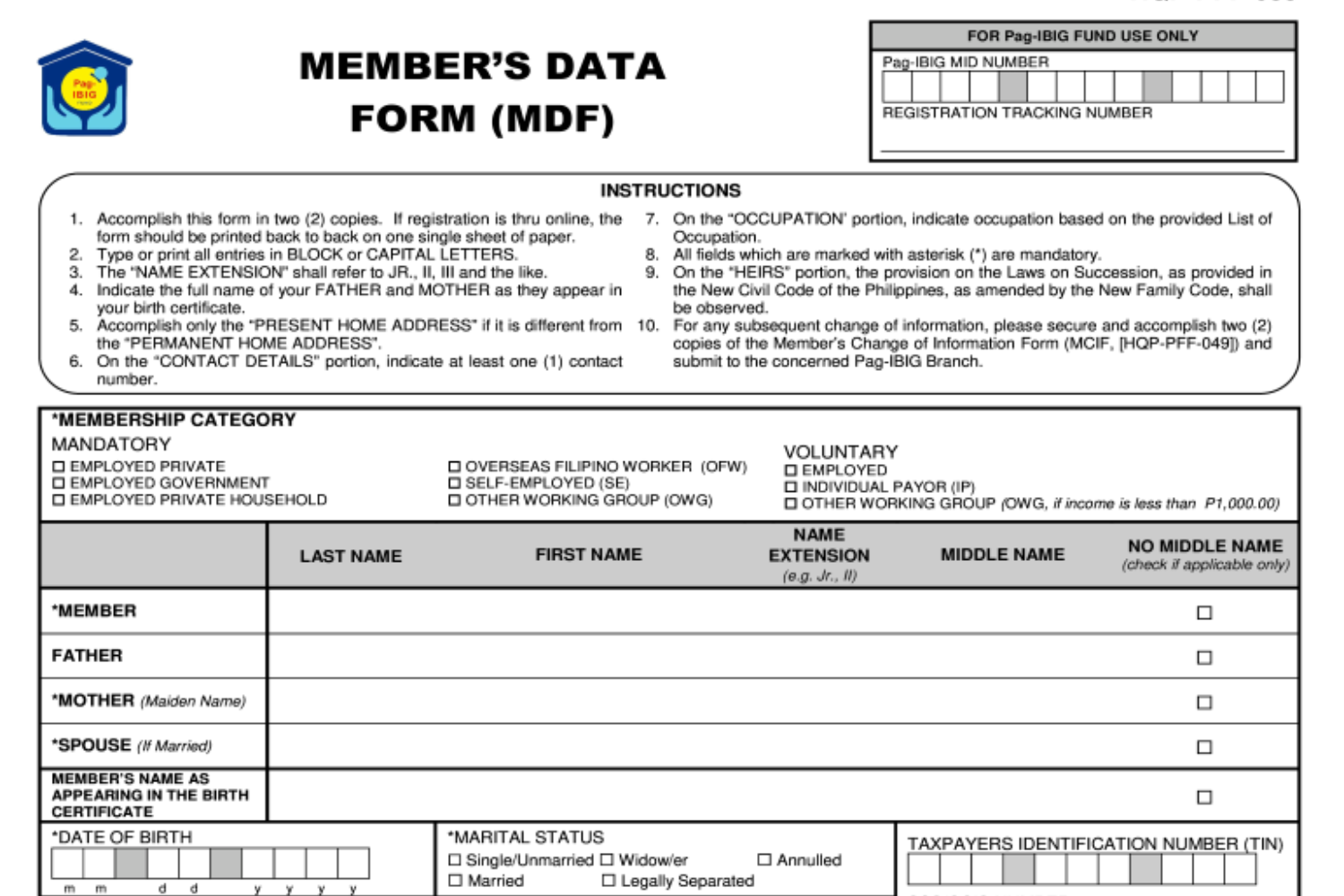Hiring in the Philippines requires more than just finding top talent—it takes preparation, legal awareness, and cultural alignment to ensure a smooth transition and long-term success. This free Philippines hiring checklist covers all the key steps before bringing on Filipino employees, including essential documents like the birth certificate, SS number slip, and TIN number.
You’ll learn how to stay compliant with Philippine labor laws, manage pre-employment requirements, and navigate government agencies such as the Social Security System, Home Development Mutual Fund, and Internal Revenue. From setting clear company policies to understanding overtime pay, maternity leave, sick leave, and vacation leave, this guide helps employers confidently hire remote workers, full-time employees, or fresh graduates across urban and rural areas.
Why Preparation Matters Before Hiring Abroad
Rushing into the hiring process without planning often leads to mismatched expectations and high turnover. New hires may not understand the role clearly, and employers may struggle with unclear company policies or missing paperwork.
A strong hiring setup improves onboarding and helps new employees succeed faster. Clear roles, defined expectations and documented pre-employment requirements make the application process smoother for remote workers and Filipino professionals.
Legal and Compliance Essentials to Prepare
Complying with Philippine labor laws from the start helps protect your business and ensures a smooth hiring experience for you and your team.
Decide on employment model: Contractor, EOR, or direct hire
Your hiring process starts with choosing how to hire employees in the Philippines. Each model has different rules and tax responsibilities.
- Independent Contractor: No local benefits are required. You handle payments directly and provide a clear employment contract outlining deliverables.
- Employer of Record (EOR): A third party handles legal employment, taxes, and social security system contributions for you.
- Direct Hire: You register with government agencies and follow local employment laws, including contributions to Pag-IBIG membership, health insurance, and SSS number setup.
Prepare basic contracts and NDAs
Before onboarding, draft a clear employment contract and non-disclosure agreement (NDA). For employees under local labor laws, contracts typically include provisions on working hours, overtime pay, maternity leave, sick leave, and vacation leave. NDAs help secure confidential data and define network security expectations. Attach required documents such as birth certificate, SS number, and TIN number to confirm employee identity.
Understand IP protection and data privacy obligations
If your business processes the personal data of individuals in the Philippines, you may need to comply with the Philippines Data Privacy Act to protect client data, especially when handling financial or customer records. If you hire remote workers, ensure your team follows strict network security policies. Also, clarify who owns work output—include clauses for intellectual property (IP) rights in contracts to prevent future disputes.

Tools and Infrastructure You’ll Need
To manage remote work across different departments, build a reliable tech stack that ensures clear communication, secure access, and productive collaboration.
Communication: Zoom, Slack, Loom, email
Your team needs structured tools to connect across time zones. Zoom is essential for video calls and team check-ins, while Slack keeps conversations organized by topic or department heads. Loom helps explain tasks visually, especially for role-specific training, and email remains standard for formal updates or direct deposits information.
Task management: Asana, Trello, ClickUp
Assigning tasks and tracking progress keeps your team focused. These tools support planning across urban and rural areas.
- Asana: Best for recurring task lists and team tracking.
- Trello: Simple boards for managing small projects or onboarding fresh graduates.
- ClickUp: Advanced dashboards for complex workflows across different departments.
Document sharing and SOPs: Google Workspace, Notion
Cloud tools help your team access files securely and work in real-time. Google Workspace allows easy sharing of SOPs, calendars, and payroll templates. Notion works well for building process documentation, step-by-step guides, and shared knowledge bases. Both tools support a smooth transition for new employees and promote a strong company culture through transparency.
Cultural and Communication Readiness
Hiring Filipino professionals means working with people with unique strengths, values, and communication styles. You must align your company culture and workflows to support clear communication and mutual respect.
Do you understand Filipino workplace values (e.g., pakikisama)?
Many Filipino employees value harmony, teamwork, and mutual respect. Concepts like pakikisama, which means maintaining good relationships and group unity, are essential in day-to-day interactions. Showing cultural awareness—such as acknowledging milestones or encouraging collaboration—helps build trust and loyalty. Leaders who respect hierarchy and show appreciation usually get better engagement from remote workers.
Can you give feedback clearly but respectfully?
Direct feedback is not always the norm in the Philippines. To support a strong work ethic without causing discomfort, use gentle language when correcting mistakes and balance criticism with encouragement. Avoid public corrections. Instead, use regular check-ins and private conversations to guide new hires. Clear communication paired with empathy is key to coaching Filipino professionals effectively.
Do you have time zone overlap built into your schedule?
Most Filipino citizen professionals working with U.S. companies adjust to time zones that allow for at least two to three hours of overlap. Building this overlap into your schedule supports real-time discussions and faster responses across different departments. For example, if you’re in the U.S., set daily calls during morning hours so your team in Metro Manila can join before ending their day. This setup supports smoother teamwork across global locations.

Role Definition and Candidate Persona Clarity
A clear role description helps you find the right person faster and avoids confusion during the hiring process. Ensure the job matches what your new employees expect and your business needs.
Do you know exactly what this person will do?
Unclear job duties create confusion, low performance, and early turnover. Write out the tasks this role will cover, how often they’ll do them, and what results you expect. If you’re hiring for remote work, include tools used, expected working hours, and team structure. Clarity reduces the learning curve and improves outcomes for both employer and worker.
Have you listed must-haves vs. nice-to-haves?
Not every skill is essential for success. Separate core skills from bonus ones to avoid losing great candidates who don’t meet every point. This is especially helpful when reviewing applicants from urban and rural areas with different experiences.
| Must-Haves | Nice-to-Haves |
|---|---|
| 2+ years experience in the role | Industry-specific experience |
| Fluent English (written and spoken) | IELTS or TOEFL certification |
| Experience working with foreign teams | U.S. client experience |
| Familiar with Google Workspace | Familiar with Notion or ClickUp |
| Reliable internet and backup | Access to UPS or generator |
Do you know what salary and hours to offer?
Offering competitive salaries helps you attract top talent. Make sure your offer fits current market rates based on region and skill level. For example, wages in Metro Manila are usually higher than in rural areas. Be upfront about standard working hours, expected overtime pay, and holidays. Don’t forget about extra benefits like health care, mental health support, and direct deposits—these help build long-term loyalty and reduce turnover.
Interview and Vetting Prep
A solid screening process ensures you hire skilled, reliable team members. Set up structured tools and methods to fairly and consistently evaluate each candidate.
Prepare technical tests, interview scripts, and trial tasks
Test skills before hiring to confirm they match your job requirements. This could include a written task, customer support response, or a small project based on the role. Use a standard interview script to ask the same questions across candidates and assign a short trial task to assess their real-world performance. These steps save time and help you choose confidently.
Identify red flags to watch for in interviews
Look out for signs like vague answers, poor communication, unclear career goals, or weak internet connections. Delayed responses or issues submitting documents like the original copy of a birth certificate, SS number, or SSS number may signal a lack of preparation. Ask about understanding company policies, data privacy, and how they handle issues in remote teams.
Plan who will conduct the interviews and reviews
Assign roles to your department heads or team leads during the interview process. One person can lead the screening call, while another handles the skills review. This setup allows for better evaluation across different departments, improves alignment, and ensures a fair and thorough decision. Organize interviews using calendar tools and leave space for review notes after each round to speed up hiring.

Payment Systems and Payroll Planning
Paying Filipino employees on time and in the correct format builds trust and keeps your team engaged. Choosing the right system helps with convenience and tracking, but employers should still consult a tax expert for compliance, recordkeeping, and financial forecasting for long-term success.
Decide how you’ll pay: Wise, PayPal, Payoneer, or others
Payment platforms make sending money to remote workers in the Philippines easy. Choose one that offers low fees, fast delivery, and access to local banks.
- Wise (formerly TransferWise): Fast delivery, great rates, low transfer fees
- PayPal: Widely accepted, higher fees, offers limited withdrawal options
- Payoneer: Easy for freelancers, supports USD accounts, works well with marketplaces
- Direct bank transfers: Good for recurring payments, requires SWIFT/BIC codes
- Gcash/Coins.ph (via third-party platforms): Popular in rural areas, used for direct deposits
Understand benefits like 13th-month pay or PTO
While not mandatory for contractors, 13th-month pay is a mandatory benefit for employees under Philippine labor laws but not required for independent contractors. Offer it to stay competitive and attract top talent.
Include paid vacation leave, sick leave, and maternity leave in your employment contract. Offering optional benefits like health insurance, mental health support, and Pag-IBIG contributions may improve retention and align with what Filipino professionals expect.
Clarify exchange rates and payment timelines
Paying in USD is common, but checking how exchange rates affect your team’s take-home pay is important. Let your team know when they can expect their salary—weekly, biweekly, or monthly—and state expected payment timelines in the contract to avoid misunderstandings, especially when working with contractors.
For employees, ensure all payments match official SSS contributions as recorded under your registered employer account. This is to ensure your internal system stays aligned with government offices and avoid issues with internal revenue tracking.
Philippines Hiring Checklist for Founders
| ✅ | Task | Notes / Links |
|---|---|---|
| ☐ | Define role responsibilities and expected working hours | |
| ☐ | Create a candidate persona with must-haves vs. nice-to-haves | |
| ☐ | Decide on employment model: Contractor, EOR, or Direct Hire | |
| ☐ | Draft employment contract and NDA | |
| ☐ | Collect pre-employment documents (Birth Certificate, TIN, SSS, Pag-IBIG) | |
| ☐ | Confirm internet speed and backup from candidate | |
| ☐ | Set communication tools: Zoom, Slack, Email, Loom | |
| ☐ | Set up task and document tools: Asana, Trello, Google Workspace, Notion | |
| ☐ | Prepare interview scripts, trial tasks, and evaluation rubric | |
| ☐ | Choose payroll method (Wise, Payoneer, PayPal, Bank Transfer) | |
| ☐ | Decide on benefits: 13th-month pay, PTO, health insurance | |
| ☐ | Schedule onboarding and role-specific training | |
| ☐ | Plan regular check-ins and performance feedback cycle | |
| ☐ | Document salary, payment cycle, and exchange rate agreements in writing | |
| ☐ | Ensure compliance with Philippine Data Privacy Act and IP clauses |
Final Thoughts: A Checklist Now Saves Headaches Later
A solid Philippines hiring checklist makes it easier to bring on reliable Filipino employees and keep your team running smoothly. The key is in the details—knowing your legal steps, prepping your systems, and respecting cultural differences.
With the right planning, you’ll avoid costly mistakes and hire faster. Use this checklist to stay organized, protect your company, and confidently build a long-term offshore team that fits your vision.
Frequently Asked Questions
What documents are required to hire a Filipino remote worker?
Common pre-employment requirements include birth certificates, TIN numbers, and SS numbers.
Do I need to follow local labor laws when hiring from abroad?
Yes, you must follow Philippine labor laws and work with the right government agencies, depending on your employment model.
Is 13th-month pay required for contractors?
It’s not required, but offering it helps you stay competitive and supports better retention.
How do I pay remote workers in the Philippines?
Use tools like Wise, PayPal, or Payoneer for secure international transfers.
What’s the best way to manage payroll for Filipino employees?
Set clear timelines, track exchange rates, and document all payments for social security and internal revenue compliance.
References
- Bangko Sentral ng Pilipinas. (n.d.). Payments and Settlements. https://www.bsp.gov.ph/SitePages/PaymentsAndSettlements/PaymentsAndSettlements.aspx
- Bureau of Internal Revenue. (n.d.). Processing of Application for Taxpayer Identification Number (TIN) Card. https://www.bir.gov.ph/BIRCC-RDO-External-Service-26
- Jocano, F. L. (1999). Working with Filipinos a cross-cultural encounter. https://tuklas.up.edu.ph/Record/UP-99796217604684887?sid=123813517
- Labor Law PH Library. (n.d.). P.D. 851: 13th Month Pay. https://library.laborlaw.ph/p-d-851-13th-month-pay/
- Labor Law PH Library. (2023). 2023 Handbook on Workers Statutory Monetary Benefits by DOLE-BWC. https://library.laborlaw.ph/2023-handbook-on-workers-statutory-monetary-benefits-by-dole-bwc/
- Pag-IBIG Fund. (n.d.). Pag-IBIG Fund. https://www.pagibigfund.gov.ph/
- Philippine Statistics Authority. (n.d.). Birth Certificate. https://psa.gov.ph/birth-certificate
- Philippine Statistics Authority. (2023). Highlights of the 2022 Occupational Wages Survey (OWS). https://psa.gov.ph/statistics/occupational-wages-survey




